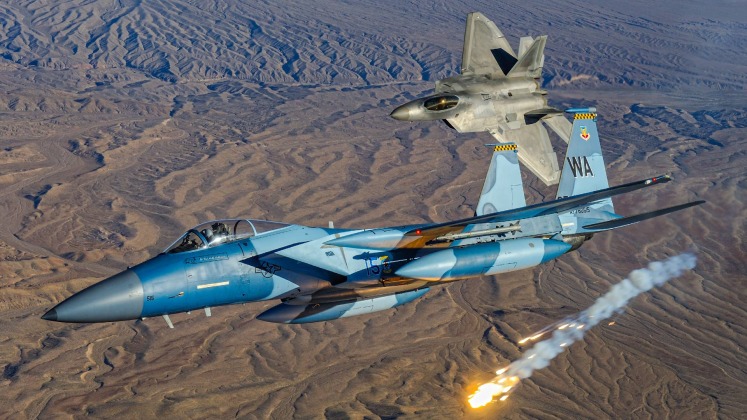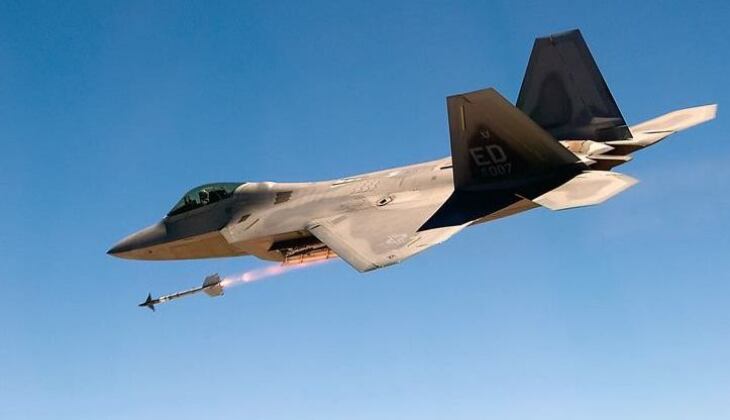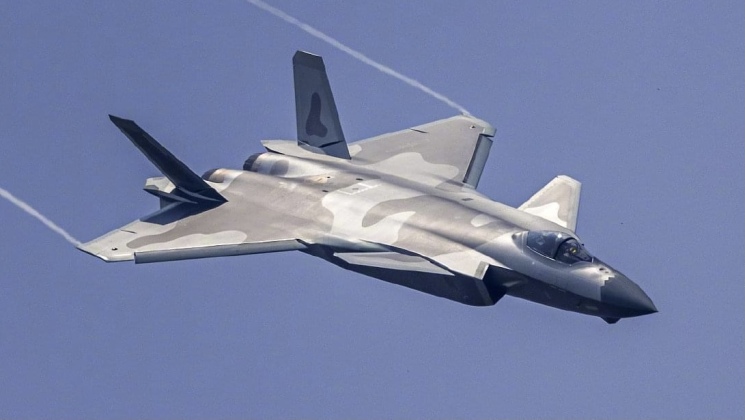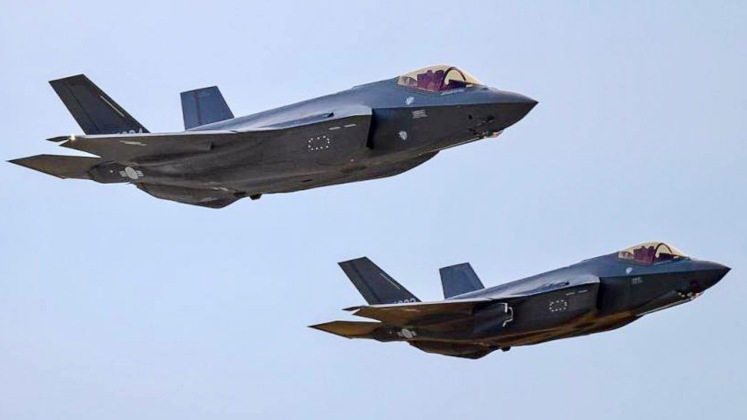News
F-35 vs. F-22 in a Close Range Dogfight: Avionics May Still Matter More Than Manoeuvrability

The F-35 and F-22 are the only fifth generation fighters to have entered service anywhere in the Western world, and were designed as complementary light and heavyweight aircraft to be fielded side by side with the former forming the bulk of the American fleet and the latter being fielded in a smaller number of units. The F-22, like its counterpart from the previous generation the F-15, was designed to be a much stronger performer in air to air combat with a far higher speed, altitude ceiling and thrust/weight ratio, a better turn rate and greater general manoeuvrability, as well as the ability to carry more air to air missiles. The F-35 by contrast, designed as a successor to the F-16, placed a much greater emphasis on air to ground capabilities with its anti aircraft capabilities often referred to as being primarily defensive. This was partly a result of the fact that the large majority of missions the U.S. Air Force would undertake and threats it would face would require engagement of ground targets, particularly after the Cold War, with the Warsaw Pact and Soviet Union having collapsed and no foreign country other than China producing rival fighters from the fifth generation.
Although the F-35 and F-22 were expected to be produced simultaneously as their predecessors were, issues with the F-22 particularly pertaining to its excessive operational costs, high maintenance needs and a number of performance deficiencies led the Pentagon to order a closure of production in 2009 less than four years after the aircraft had joined the fleet. This contrasted sharply with the F-15, which joined the Air Force in 1975 and is still in production today 47 years later. The result has been that the F-35 has continued to be modernised, with new production blocks having overwhelming performance advantages over prior ones, while the F-22 has increasingly been left behind. Indeed, even fourth generation F-18E Block 3 and F-15EX fighters in production today, the former for the Navy and the latter to supplement F-35s in the Air Force, have several very significant advantages over the F-22 due to their much newer designs and particularly their superior avionics.

Aside from its much lower maintenance needs and operational costs, the F-35’s primary advantages over the F-22 that are frequently raised include its sensor fusion and distributed aperture system providing much increased situational awareness, its much more potent electronic warfare capabilities, and its ability to share data with all manner of other assets. The F-22, however, has long been assumed to have superiority in air to air combat, and particularly within visual ranges, due to its far better flight performance. When examining the F-22’s deficiencies, however, there remains a significant possibility that the heavier fighter may well face a significant disadvantage in visual range engagements when compared to the capabilities of the F-35. Although the relevance of visual range combat has increasingly been called into question in modern warfare, the possibility remains significant that in a war between major powers radars and radar guided missiles could be blinded by various countermeasures leaving countries to depend on close range air to air combat. As seen in much of the Gulf War, issues with friend or foe identification can also force fighters to visually confirm the identity of a target before engaging making a close range engagement capability necessarily. The U.S. Military’s only 21st century air to air engagement against a manned target, a Navy F-18E targeting a Syria Su-22 fighter in 2017, also occurred within visual range.

The F-35 and F-22 can both carry two AIM-9X air to air missiles in their internal weapons bays, although foreign F-35s such as those in British service can use indigenous equivalents to the missile. The F-35 has the advantage, however, of being able to carry several AIM-9s externally, and although this would compromise its stealth capabilities this would not have an impact on visual range engagements where infrared rather than radar guidance is relied on. The F-35 has the advantage of being able to fly radar silent at closer ranges using its infra red search and track system, which is better optimised to combat at close ranges and means it cannot be detected by its radar signature. This is also considered more reliable and more difficult to jam than a radar. The F-22 lacks an IRST meaning it relies solely on its single radar. The F-35’s situational awareness advantage will also be increased by its use of distributed aperture systems, which allow pilots to see through their aircraft using their helmets and more effectively collect data from around the plane. This is also used by the Chinese J-20 leaving the F-22 as the only widely fielded aircraft of its generation without it. Thus the F-35’s avionics provide it with something of an edge not only at long ranges, but also close in.

Perhaps the F-35’s most significant advantage in visual range combat is that the fighter uses helmet mounted signs, a feature pioneered by the Soviet Air Force in the 1980s on the MiG-29 and Su-27 fighters which paired with the R-73 missile to engage at very extreme high off boresight angles. This allows pilots to cue air to air missiles to engage targets using their helmets, and avoids the need to point fighters towards the targets which could provide a very overwhelming edge – as noted by NATO pilots after wargames pit former East German MiG-29s against a range of American aircraft in mock air battles. The U.S. notably gained access to the MiG-29’s system and to the R-73 after East Germany was absorbed into the West and subsequently into NATO, and the AIM-9X and accompany helmet mounted sights were developed soon afterwards to bridge the performance gap with the new generation of Soviet fighters. American engagements with Soviet fourth generation jets, notably MiG-29s over Iraq and Yugoslavia, were aided considerably by the fact that these downgraded variants were not equipped with the R-73 as German and Soviet variants were, meaning they had no high off boresight targeting capabilities and could be tackled at closer ranges by American fighters.

While the AIM-9X can fire at high off boresight angles, the F-22 lacks helmet mounted sights needed to cue them. As a result the fighter will need to point its nose towards a target to engage, where an F-35 pilot can use his helmet to fire on targets above, below, beside and even behind him. Thus although the F-22 can manoeuvre much better, particularly as it is the only Western fighter using thrust vectoring engines, this will likely be negated by its lack of helmet mounted sights. While the F-35B and F-35C variants suffer from issues with supersonic flight, and the former is limited to manoeuvring at only 7g rather than 9g and to carrying just four rather than six missiles internally, the F-35A designed for the U.S. Air Force and produced in far larger numbers than the other two combined does not suffer from similar issues. Although the F-35’s combat readiness and performance issues have frequently been highlighted in Pentagon and other government reports, once the airframe gains a more reliable operating capability it is likely to be considered superior to the F-22 not only in strike roles and at beyond visual range air to air combat, but also in the position it was long considered worst at which is close in dogfighting. The F-22 by contrast, out of production for over a decade and facing a very early beginning of retirement, is set to be succeeded by a much more capable air superiority fighter currently under development under the Next Generation Air Dominance Fighter program, which is almost certain to not only meet the latest standards for avionics but surpass them comfortably as a sixth generation jet.












